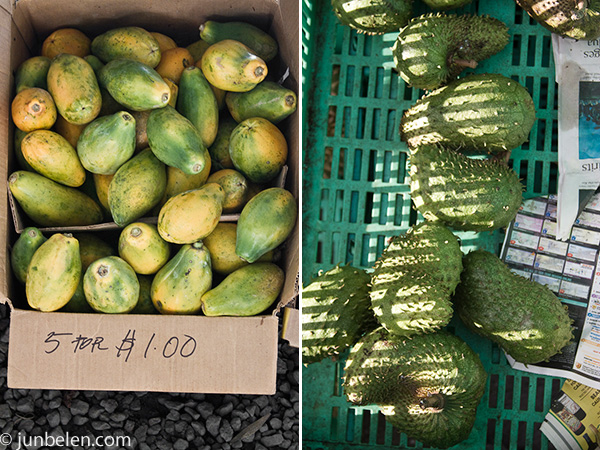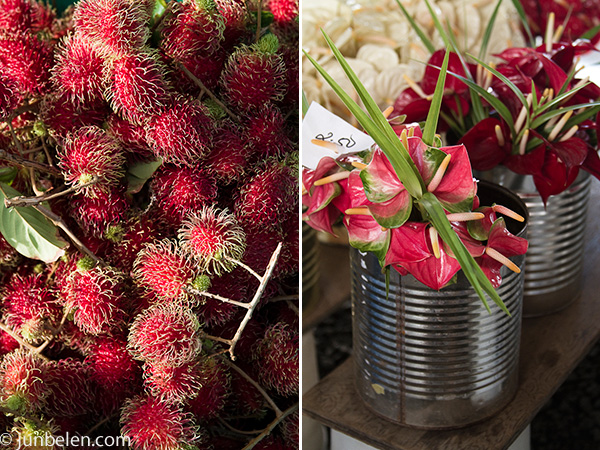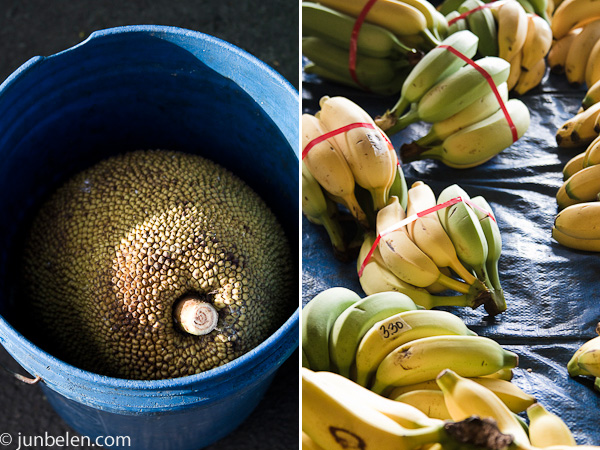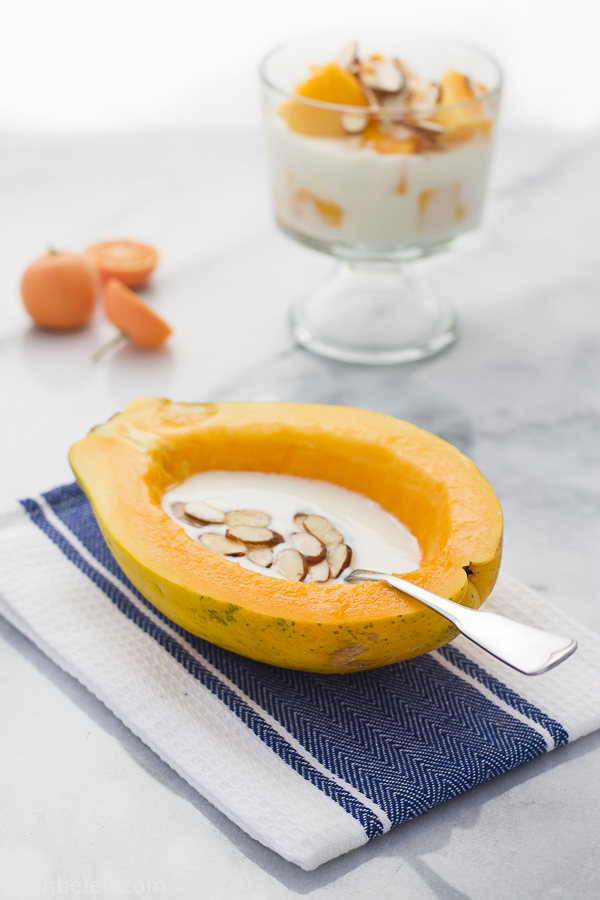With a plastic fork I salvaged from breakfast, I scooped the guyabano’s soft pulp gingerly from its delicate skin. Each bite brought back memories of sweat-soaked summers of long ago. I remembered how its sweet juice dribbles down my chin. I remembered how its white flesh flakes off into countless thin wedges with its hard, pointed seeds scattered sparsely throughout. I remembered its spiny skin — firm, leathery, and shiny-green when picked right off the tree, soft and spotted when it ripens. I remembered its creamy taste with notes of citrus and pineapple. It was everything I remembered guyabano to be and rediscovering a childhood favorite in the market that morning was the sweetest thing.
Our visit to the Hilo Farmers’ Market turned out to be a reunion of sorts. My heart raced as soon as I saw those guyabanos, also called soursops. “Hold them gently. They’re very ripe and soft,” the young lady warned me as she handed me the newspaper-wrapped fruit. My mom does the same thing, she wraps them in day-old newspaper to help them ripen more quickly.
I also picked up a bag of rambutans still bunched up in their stalks. These are the odd-looking, oblong-shaped, red fruits lavishly covered with soft yellow spines. “How do you eat these again?” Dennis asked with a furrowed brow. He instantly got a kick out of the exotic fruit when I first introduced it to him in our trip to Costa Rica. We were driving from San Jose to Manuel Antonio and saw bananas and rambutans in a roadside fruit stand. We pulled over and treated ourselves to the freshest afternoon pick-me-ups. “Pinch the middle with your two thumbs and then tear it open,” I showed him. “Plop the seed into your mouth and tear the flesh with your teeth.” I adore rambutans but there’s one problem I have with them, I must admit. There is no way to tell if they’re sweet or sour. It’s always hit or miss.
And then there were boxes and bins filled with papayas everywhere, both round ones and those slightly longer ones, which are called strawberry papayas. I grew up with papaya trees in our backyard. Tall slender trunks with no branches. My dad would pick ripe ones for breakfast or dessert — sliced in quarters and sprinkled with calamansi juice. He would also pick green ones for my mom’s tinolang manok — chicken stewed in clear ginger broth.
We grabbed Americanos and found a picnic table where we gathered our loot — guyabanos, rambutans, and papayas, spam and hotdog musubis, sweet sticky rice cakes, and a loaf of banana bread freshly baked that morning made with the ripest apple bananas. Everything reminded me of home. What a beautiful way to start the day, I thought. As soon as we were ready to head out and drive to Kilauea, rain started to pour. I guess it’s true when they say that it rains everyday in Hilo.
Making Papayas for Breakfast
fresh papayas
calamansi, or limes
vanilla yogurt
slivered almonds or crushed macadamia nuts
Cut the papaya in half. Scoop out and toss the seeds — there are lots of them! Give its soft, orange flesh a good spritz of calamansi. Add some vanilla yogurt and sprinkle with slivered almonds or crushed macadamia nuts. You can also peel off the skin and slice the fruit into cubes. Toss them in a bowl with yogurt and a sprinkle of nuts.




Pingback: Tweets that mention Rediscovering Guyabanos, Rambutans, and Papayas at the Hilo Farmers’ Market -- Topsy.com()
Pingback: Hiking Kilauea and How to Make Loco Moco()
Pingback: How to Make Fish Pinangat (Fish Soured in Calamansi and Tomatoes) | Jun-Blog()
Pingback: How to Make Buko Pie | Jun-Blog()
Pingback: H is for Himagas and How to Make Brazo de Mercedes | Jun-Blog()
Pingback: How to Make Oven-Roasted Kalua Pork | Jun-Blog()